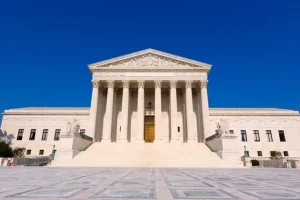FCC Continues Fight Against Spam and Scam Texts
On September 27, 2022, the Federal Communications Commission (FCC) voted to adopt the New Notice of Proposed Rulemaking (NPRM) to Fight Scam and Spam Text Messages with Network-Level Blocking & Sender ID Authentication.
The FCC summarized in the following proposal in the NPRM, in which they propose:
- To require mobile wireless providers to block illegal text messages, building on ongoing work to stop illegal and unwanted robocalls
- To require mobile wireless providers to block texts, at the network level, that purport to be from invalid, unallocated, or unused numbers, and numbers on a Do-Not-Originate (DNO) list
- To comment on the extent to which spoofing is a problem with regard to text messaging today and whether there are measures the Commission can take to encourage providers to identify and block texts that appear to come from spoofed numbers
- To seek comment on applying caller ID authentication standards to text messaging
Below, we have summarized the significant topics discussed within the notice.
Magnitude of the Problem
The FCC began its notice by providing data that reveals the magnitude of the problem of scam/spam text messages. The FCC stated that they had received 15,300 consumer complaints about unwanted texts in 2021 and 8,500 such complaints through June 30, 2022. They also reported that in 2020, scammers stole over $86 million through spam texting fraud schemes and the median amount stolen from consumers in such scams was $800.
The Commission goes on to describe how bad actors have resorted to exploiting consumers’ concerns and fears, such as engaging in COVID-19 related texting scams. The IRS has even seen an increase in phishing schemes using emails, letters, texts, and links, with keywords such as “Corona Virus,” “COVID-19,” and “Stimulus.” The FCC continues to describe how industry data suggests that consumers open a far larger percentage of text messages than email and open such messages much more quickly.
Regulatory Background
The FCC then recapped the regulatory laws that are already in place that cover unwanted text messages, such as the Telephone Consumer Protection Act (TCPA), the National Do-Not-Call Registry (DNC), and the Controlling the Assault of Non-Solicited Pornography and Marketing Act of 2003 (CAN-SPAM Act). However, the Truth-in-Caller ID Act of 2009, which prohibits caller ID spoofing may be the result of why scam texts are rising since the act only covers phone calls and not text messages. Additionally, the FCC addresses how the STIR/SHAKEN Act does not currently cover text messages.
Call Blocking
The commission described the efforts they have already made around stopping unwanted robotexts, but they do not think the current rules are efficient enough. Specifically, they established the “Do-Not-Originate” (DNO) list, which allows telemarketers to specify numbers explicitly used for incoming calls. Any scammer trying to spoof an “inbound only” number, such as those from the IRS, would be blocked at the carrier level before reaching the intended victim.
Discussion
The commission discussed its proposal to protect consumers from the increasing numbers of illegal text messages by extending some of the consumer protections that are already in place for illegal phone calls to text messages.
Mandatory Blocking of Illegal Texts
The commission requests to seek comments on the following:
- Its proposal of Mandatory Blocking of Texts Purporting to be From Invalid, Unallocated, or Unused Numbers or on the Do-Not-Originate List without consumer opt-in or opt-out
- Whether providers are blocking these messages already
- Any additional types of text blocking providers are doing
- If numbers placed on the DNO List are used for illegal texts
- On the extent to which spoofing is a problem with regard to text messages and if there are any additional measures the Commission could take
- How mandatory blocks would affect the voluntary blocking which is already in place
- The effectiveness of device-level or application-based text blocking, and how over-the-top (OTT) text messaging differs from SMS/MMS texts
- How the current definition from the Truth in Caller ID Act defines a text message to include SMS messages but does not include messages sent over IP-enabled messaging service
- Any additional standards for blocking that may prevent blocking of legal, legitimate (and wanted) texts, particularly in the case of one-to-many text messages and emergency texts to 911
- And whether the commission should apply any safeguards to any text blocking requirements that may be adopted regarding the risk of consumers missing wanted texts.
Applying Caller ID Authentication Requirements to Text Messages
In this section of the proposal, the commission seeks comments on several more topics which include:
- Whether to require providers to implement caller ID authentication for text messages
- The progress that has been made on applying STIR/SHAKEN efforts to text messages and the amount of time/cost it would take to install/implement STIR/SHAKEN technology
- If commenters agree with the commission’s proposal on the requirement of providers to implement caller id authentication for text messages
- What the costs of an implementation update will be and if it will affect small mobile service providers
- On the scope of any implementation mandate for authentication for text messages and whether the FCC should apply the requirement of providers of “voice service” who are subject to the STIR/SHAKEN implementation mandate that also provide text message services or if the commission should define a new class of providers subject to mandate
- What the definition of “immediate text message provider” should be and should the commission apply the requirement to intermediate providers who are subject to the existing STIR/SHAKEN rules
- Whether the commission should require voice service providers and intermediate providers to the same obligations as under the STIR/SHAKEN rules or create new obligations specific to the text message context and what the possible implementation issues could be
- Whether the commission should follow the “undue hardship” standard regarding allowing extensions
- Should the commission require providers with non-IP network technology to work to develop a non-IP solution to enable the authentication for text messages on non-IP networks or is there a different approach they could take to address non-IP network technology.
Other Actions
The Commission asks for comments on any other actions they could take to address the problem of illegal text messages and if there are any roles advisory committees such as the Commission’s Consumer Advisory Committee (CAC) and the North American Numbering Council (NANC) that could assist with educating consumers further. Additionally, the commission seeks comments on how their proposals may promote or inhibit advances in diversity, equity, inclusion, and accessibility.
Legal Authority
The Commission seeks comment on its authority to adopt the measures described in this notice under the TCPA and the Truth In Caller ID Act.
Cost Benefit Analysis
The Commission provides an overview of the expected benefits of blocking illegal texts which would achieve an annual benefit floor of $6.3 billion, and it notes that this is a very conservative estimation of the benefit. They also seek comment on their estimation that $2 billion of harm occurs annually due to fraud. The Commission concluded the $6.3 billion annual benefit floor expected from such a blocking requirement would far exceed the costs imposed on text service providers.
Please reach out to us at connect@compliancepoint.com if you have any questions about how any laws or regulations could impact your marketing efforts.
Finding a credible expert with the appropriate background, expertise, and credentials can be difficult. CompliancePoint is here to help.





